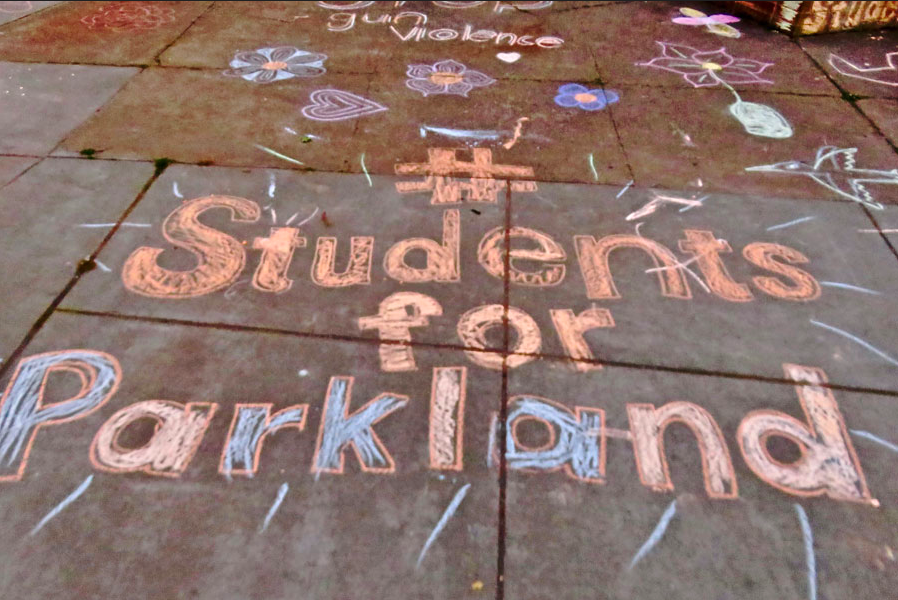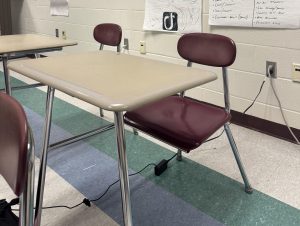Where do we go from here?
Fabrice Florin from Mill Valley, USA.
March 14th marked exactly one month since the shooting in Parkland, Florida. Students across the country chose to leave school in memoriam of the 17 lives that were lost.
March 23, 2018
Sometimes it almost seems as if everyday tragedy finds a way to make its mark — be it close at home or overseas. Waking up early in the morning, cup of coffee in hand, birds singing a new song, blissfully unaware that yet again people have been severely injured, lives have been lost, and families left grieving. The horrors that occurred over a month ago on Wednesday, Jan. 14 were no exception.
Last week marked one month since a teen gunman took 17 innocent lives of 14 students and 3 teachers at Marjory Stoneman Douglas High School in Parkland Florida. Fourteen others were wounded, five with life-threatening injuries. Broward County Sheriff Scott Israel told Time News that Nikolas Cruz, the gunman, told police that he was responsible for shooting at students and faculty in the hallways, classrooms, and on school grounds.
Cruz arrived at the school by Uber with an AR-15 assault rifle that he had purchased legally at Sunrise Tactical Supply. The purchase was made just five months after FBI agents were alerted that Cruz was a possible threat, due to a comment he made on Youtube stating, “I am going to become a professional school shooter.” Cruz was still allowed to purchase and own an assault rifle after the County Sheriff’s office had received over 20 calls regarding Cruz and his younger brother, and even after he had been expelled from school for disciplinary reasons. But because he had a clean criminal history, allowing him to clear the FBI criminal database instant background check, and since federal law allows people 18 or older to legally purchase this kind of assault rifle, he had no trouble acquiring the weapon.
But this raises the obvious question: Where do we go from here? Over a month after yet another tragedy, what is being done nationally and at home in terms of gun control and the protection of schools?
It is important to remember everything that is already done here at HB in terms of student and faculty safety. Many procedures are often overlooked as inconveniences, but these minor disruptions, including not entering through the back lobby once the doors are locked, regular evacuations, and shelter in place drills, are implemented to practice safety for the HBHS community in the best ways possible.
Principal Rick Barnes adds, “students should feel safe at HB because they have an army of caring adults and supportive classmates who are committed to their physical and emotional safety. We have a very strict safety protocol when it comes to students reporting thoughts of self-harm or harm to others. Staff are incredibly diligent when it comes to implementing this protocol. This is the best staff that I have worked with in this capacity and every other for that matter. In addition to what we do procedurally, staff seek out additional training such as CRASE/ALERRT, and Active Shooter Training through Safariland. HB also hosted a regional active shooter training conducted by the FBI a couple of summers ago. The FBI training was particularly intense for the officers that attended.”
There are numerous internal and external procedures that take place much under the student body radar such as what Mr. Barnes describes as “our consultation and collaboration with the Department of Homeland Security.” The DHS has actually performed two safety audits over the last three years at HBHS which included upgrades such as the addition of FOB safety systems, additional cameras, and new locking mechanisms on the doors.” Student Body President, Patrick Bloniasz ‘18, adds “One example of the technologies we use is COPsync, which is a software that allows all teachers to instantly talk with police officers in the local area.” The school board, faculty, and police department do an undoubtedly excellent job at working together to provide a safety net, but as Bloniasz points out “with all of this in place, we cannot become complacent when it comes to human lives, and we need to always be trying to improve to avoid any needless tragedy.”
It is no doubt that HBHS faculty is highly dedicated toward preparation for school safety, and in terms of what is being done following the events in Parkland, there was a school walkout on Wednesday, March 14 to honor the lives of the victims. Additionally, to conquer the problem of making more “room for direct discussion between students and staff, ” that Bloniasz expresses as a need, the building-wide Safety Committee has added a student to their team so that the student leadership can be more involved regarding campus security.
On a national level, the school walkouts that took place on March 14th which functioned as both a memorial and a protest, and so far the message has been received. Florida passed their most aggressive gun reform in the last twenty years, according to the New York Times. This legislation raises the minimum age required to purchase a firearm to twenty-one, creates a waiting period, bans bump stocks, funds school security, expands mental health services, and arms school faculty. In Washington President Trump has called for “bold action to improve school safety after last month’s Parkland shooting” says ABC news. And while there have been no direct plans from the White House other than to leave the control for reform in the hands of the states, the Parkland shooting seems to be a turning point for many in terms of reform.













